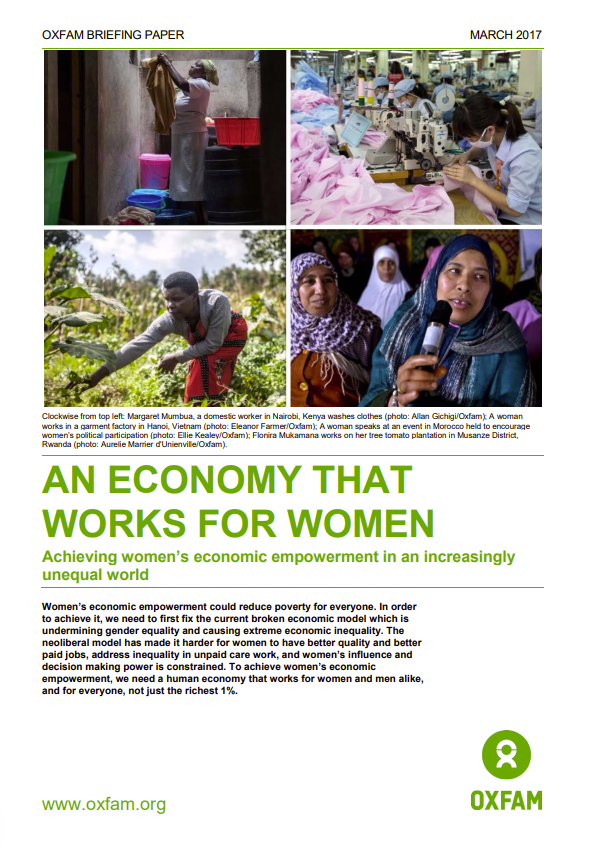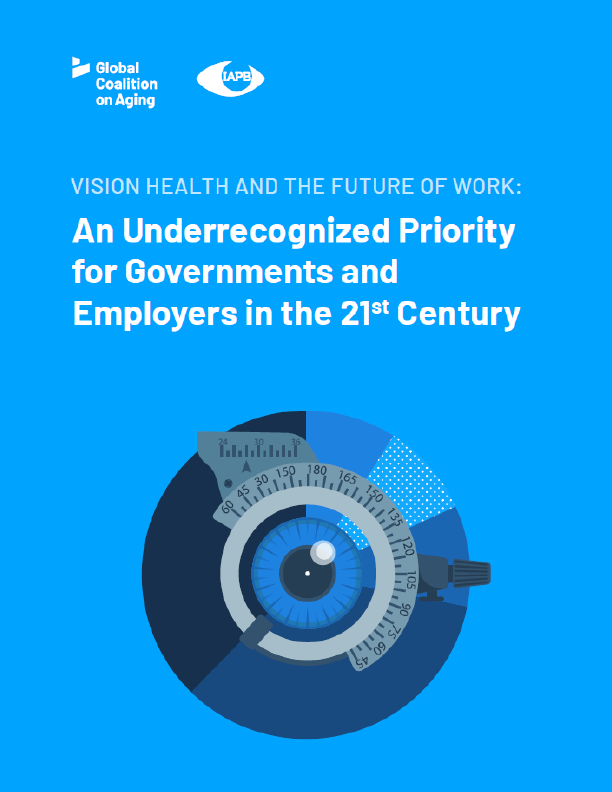Gender inequality is a social phenomenon in which men and women are not treated equally. The treatment may arise from distinctions regarding biology, psychology, or cultural norms prevalent in society. Women’s economic empowerment could reduce poverty for everyone. In order to achieve it, we need to first fix the current broken economic model which is undermining gender equality and causing extreme economic inequality.
The neoliberal model has made it harder for women to have better quality and better paid jobs, address inequality in unpaid care work, and women’s influence and decision making power is constrained.
To achieve women’s economic empowerment, we need a human economy that works for women and men alike, and for everyone, not just the richest 1%.
Women’s economic empowerment requires the creation of decent, quality work opportunities with fair pay, and an increase in women’s decision making power.2 It is vital for fulfilling women’s rights, reducing poverty and achieving broader development goals. To end extreme poverty will take much more than just money. But gender inequality in the economy costs women in developing countries $9 trillion a year3 – a sum which would not only benefit women but would unleash new spending power across communities and provide a massive boost to the economy as a whole.
However, progress in making women equal to men in the economy is painfully slow, and women are still more likely than men to live in poverty. 4 Across the world, women consistently earn less than men and are concentrated in the lowest-paid and least secure forms of work.5 Globally, the average gender pay gap is 23 percent6 and 700 million fewer women than men are in paid work.7 The World Economic Forum has warned that instead of improving in 2016, gender inequality in the economy reverted to where it stood in 2008.8 At the current rate of progress, it will take 170 years for women and men to be employed at the same rates, paid the same for equal work, and have the same levels of seniority. 9 Clearly, a structural change is needed.
Evidence shows that although gender equality supports economic growth, not all economic growth supports gender equality.10 Our current economic model is concentrating wealth at the top of the economy, causing extreme economic inequality and leaving the poorest women and girls behind. Currently eight men own as much as the poorest 3.6bn people on the planet.11 Rising inequality has slowed down reductions in poverty, and the majority of the world’s poor continue to be women.
To achieve women’s economic empowerment, we need to make the economy work for women. Harmful social norms devalue and restrict women’s work: research in 67 developing countries revealed that on average, one in five men disagreed that women should have work outside the home, even if they are qualified to do it.12 Inequalities also persist in the law and regulation. 155 countries have at least one law which means women have fewer economic rights than men.13 There has also been a failure to recognize that economic policy impacts women and girls differently to men and boys.
This report looks at how this economic model, neoliberalism, constrains women’s economic empowerment in three main ways:
• Neoliberal policies have led to poor labour rights and low pay. Countries are pursuing economic development strategies that prioritize cheap and precarious work, the majority of which is done by women.
• Unpaid care work has failed to be recognized and valued for its contribution to the economy. Current economic policies have undermined investment in infrastructure and public services like education, healthcare and social protection, meaning women have increased responsibility for unpaid care work.
• Women’s collective voice and influence on economic decision making is hampered by restrictions placed on labour organizing and undue influence of the richest in society over economic policy.











